220 miles north of Mt Airy, via Interstates 74, 77, and 81, we find ourselves in the Shenandoah Valley Campground, site B18. This is a perfectly acceptable campground, even though a rock can be thrown from the dog park and hit a vehicle on Interstate 81! No frills and no pavement, but good utilities and friendly staff.
We checked out the Sturgeon Moon, but it was colored by high level smoke from northern forest fires. What a sight!
Across the freeway, our next stop was the Meems Bottom covered bridge. Virginias longest remaining covered bridge. 200 feet long, supported by a Burr Arch, it was built in 1892 and is still open to vehicular traffic.
Just a short distance from our camp is the New Market Battlefield Military Museum. West of New Market, the Bushong family farm was located at the base of a gentle hill, a perfect location for a Union defensive force under the command of Major General Franz Sigel. Even though by May of 1864, the Confederacy was inching toward collapse, Confederate Major General John C. Brekinridge and his troops were in position south of the hill, ready to recapture the vital roadway that ran through the Shenandoah Valley. On Sunday, 15, General Brekinridge began his march north, chasing the “Yanks” across the Shenandoah River, resulting in a huge Confederate victory.
In 1987, John Bracken acquired a portion of Manor’s Hill. Born in Mt Airy, NC, his father was a collector and seller of antiques. He passed his love of things old on to his son, and young John developed a passion for collecting. Over time, his collection grew to include artifacts from ancient civilizations through indigenous conflicts, the Revolutionary War, the Civil War, the Spanish American War and the wars of the twentieth and twenty first centuries. It’s an astonishing collection, with only a small fraction is on display in the 6,000 plus sqare foot building.
Many of the artifacts are controversial, but are undeniably part of our history.
This unmistakable portrait of General Robert E. Lee reflects the strength and compassion of a man thrust into an impossible situation.
Skyline Drive is an extension of the Blue Ridge Parkway, through some of God’s Greatest Country. We had no idea that Virginia had such beautiful scenery, so close to metro Washington.
We crossed the Shenandoah River and took off.
The road rose through the mountains and into the rain clouds.
The television show ran for 147 episodes, pitting Boss Hogg against Bo and Luke Duke, their cousin Daisy, and Uncle Jesse with the inept help of Sheriff Rosco P. Coltrane and his deputy Enos Strait. The plots never varied much, with the boys always staying a step ahead of trouble. Daisy provided eye candy and Uncle Jesse was always the wise voice of reason. Of course, The General Lee made several exceptional long distance aerial trips each episode!
Even though the show was set in Georgia, Cooter (Bob Jones) has established this memorial to the show in Luray, and stops by most Sunday afternoons.
The museum has a collection of the various vehicles used in the show.
We had a little fun with The General.
The Virginia Museum of the Civil War is located near the Bushong Farmhouse a couple of miles north of New Market, Virginia and tells the story of the Battle for New Market Gap and the part that cadets from the Virginia Military Institute played in the battle. It’s a troubling and yet inspiring story of passionate young men thrust into unimaginable terror. The cadets, some as young as 15, charged Union positions across a muddy field, many losing their shoes as they ran toward firing cannon.
The museum provides a rare chronological look at the war, breaking down turning points to easily understood events, but the real star of the museum is the Field of Lost Shoes. I encourage you to see the 2014 movie, Field of Lost Shoes, available on Amazon Prime. It tells the story of this battle much better than I can.
Bushong’s farm remains today as it was then, maintained like the soldiers who passed by would recognize.
General Lee and Traveller may be gone,
But the Shenandoah flows on.
As we approach the end of our stay in the Shenandoah Valley, we ran through the list of remaining things to see and noticed that we have never visited Harpers Ferry, the place some think really began the Civil War. Robert Harper started a ferry across the Potomac in 1747, at the confluence of the Potomac and Shenandoah rivers. The water was plentiful, an easy pass through the mountains was available for transporting goods, and soon thriving industries developed, cotton mills, linen factories and blacksmiths. By the early 1800’s the rivers powered an armory complex as well as commercial mills. Harpers Ferry had become the premier gun manufacturing facility in the country. In 1859, John Brown and a handful of men descended on the armory, seized rifles, and hoped to escape with the weapons and arm slaves, thereby starting a revolt that would end slavery. Unfortunately, they were captured, and John Brown was hanged for treason, giving rise to the song about “John Brown’s body lies a-mouldering in the grave, his soul is marching on”, a popular marching song during the Civil War.
Harpers Ferry is north of us, in West Virginia, on the Maryland border, only an hour and a half away. The fact that we’re so close to Washington DC, Baltimore, and the east coast is playing havoc with our tiny little minds to the point of disbelief! It just doesn’t seem possible, but, still, we set off to drive “from Virginia all the way to West Virginia.”
Being a warm, pleasant Saturday, the entrance to the National Park was busy.
The Park service runs a very efficient shuttle to downtown, since parking is nonexistent, and when most of the bus passengers got off and headed to the tee shirt shops, we went in another direction to look at the Shenandoah River and the remains of the water powered mills along it.
At the confluence of the Potomac and Shendoah Rivers, we got a great view of the “gap” created by the Potomac as it cuts through the Blue Ridge mountains on its way to Washington.
The Appalachian Trail passes through town, so we walked a part of it.
A good part of the town of Harpers Ferry is now converted to supporting the tourist industry, and indeed, we heard languages and accents from all over the world! We marveled that so many people were aware of, and interested in, the Harpers Ferry story.
An old fashioned machine shop has been set up, with belt driven lathes, drills, and specialized equipment used in the manufacture of Harpers Ferry rifles. The gunsmiths here pioneered the idea of using interchangeable parts, making repairs quicker and easier, as well as making the manufacturing process faster.
We have been surprised to learn that the Shenandoah Valley, called “the Souths Breadbasket”, had such a variety of interesting things to do and see. The Blue Ridge Mountains, many little towns looking just as they might have 160 years ago, and a comfortable sense of timelessness have made our stay here memorable.
A chanty sung by the boat oarsmen on the Lewis and Clark expedition:
“ Oh Shenandoah,I long to see you, Away, you rolling river. Oh Shenandoah, I long to see you, Way, we're bound away Across the wide Missouri”







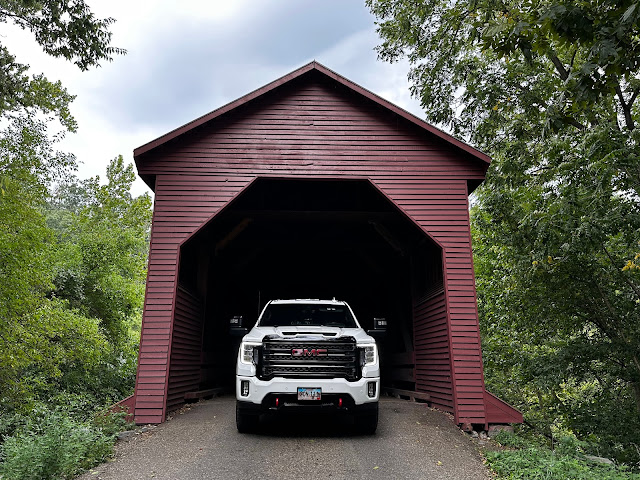











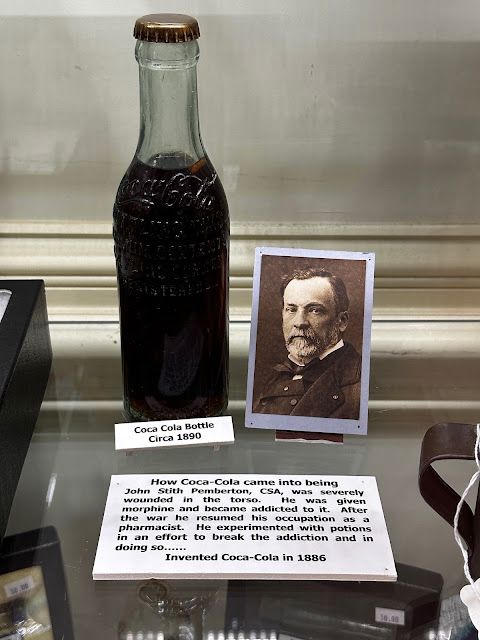







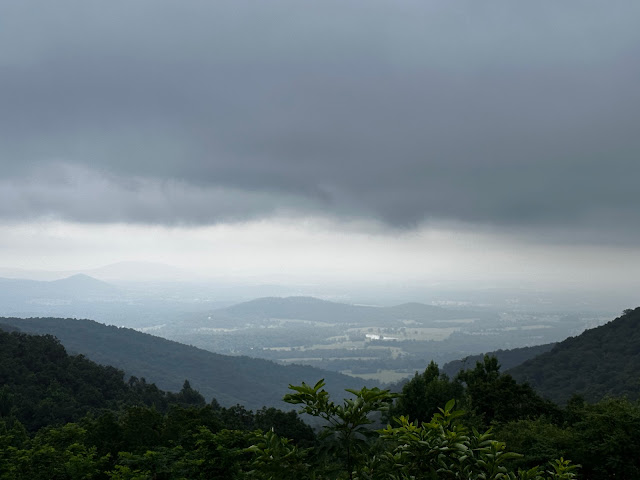





































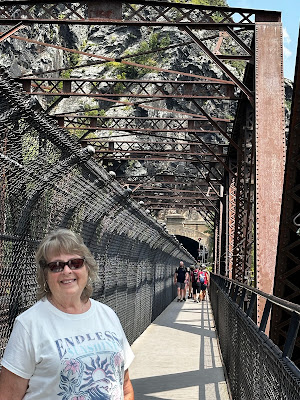



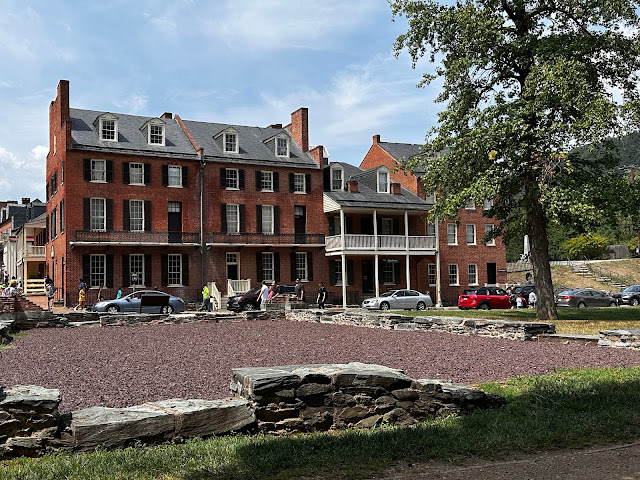







No comments:
Post a Comment